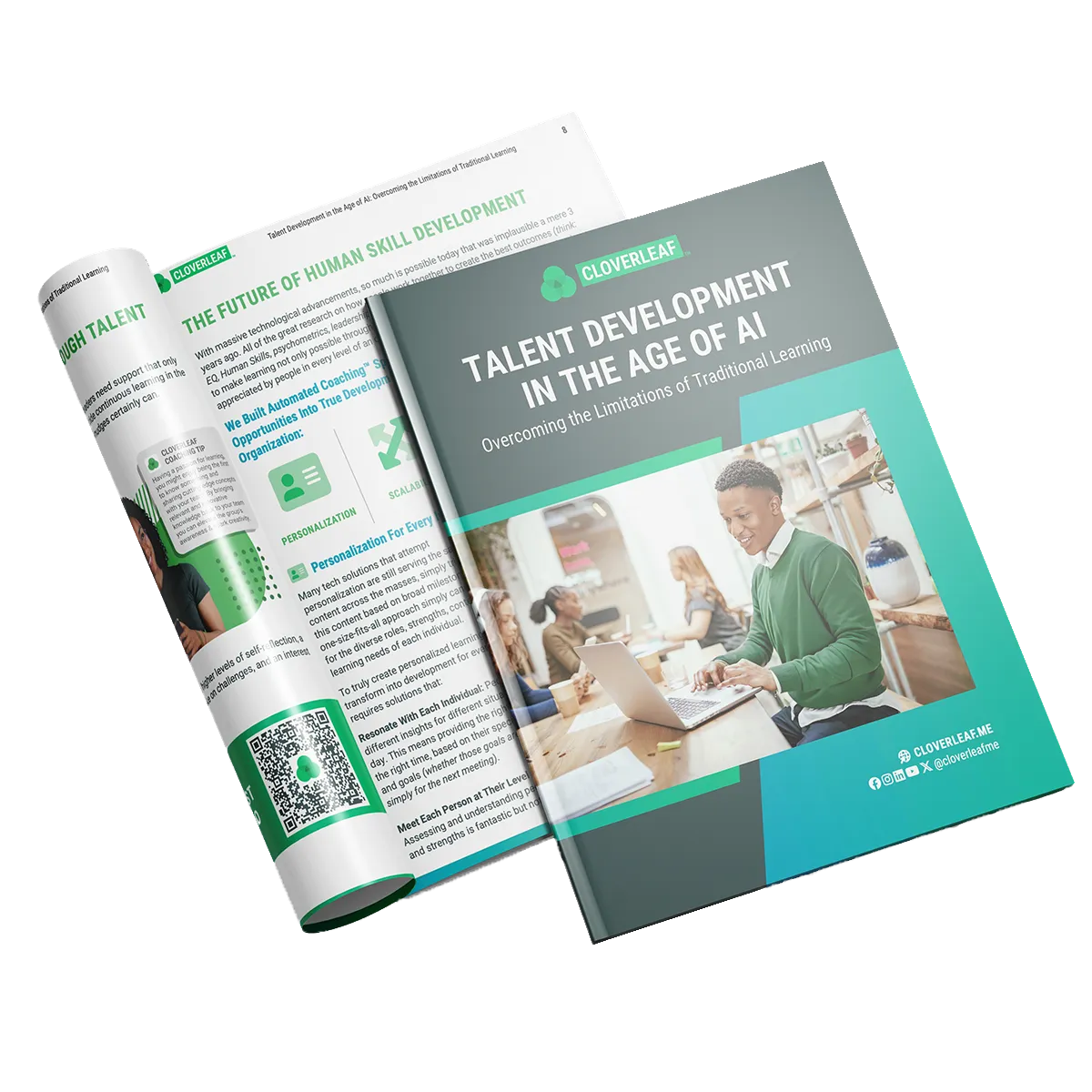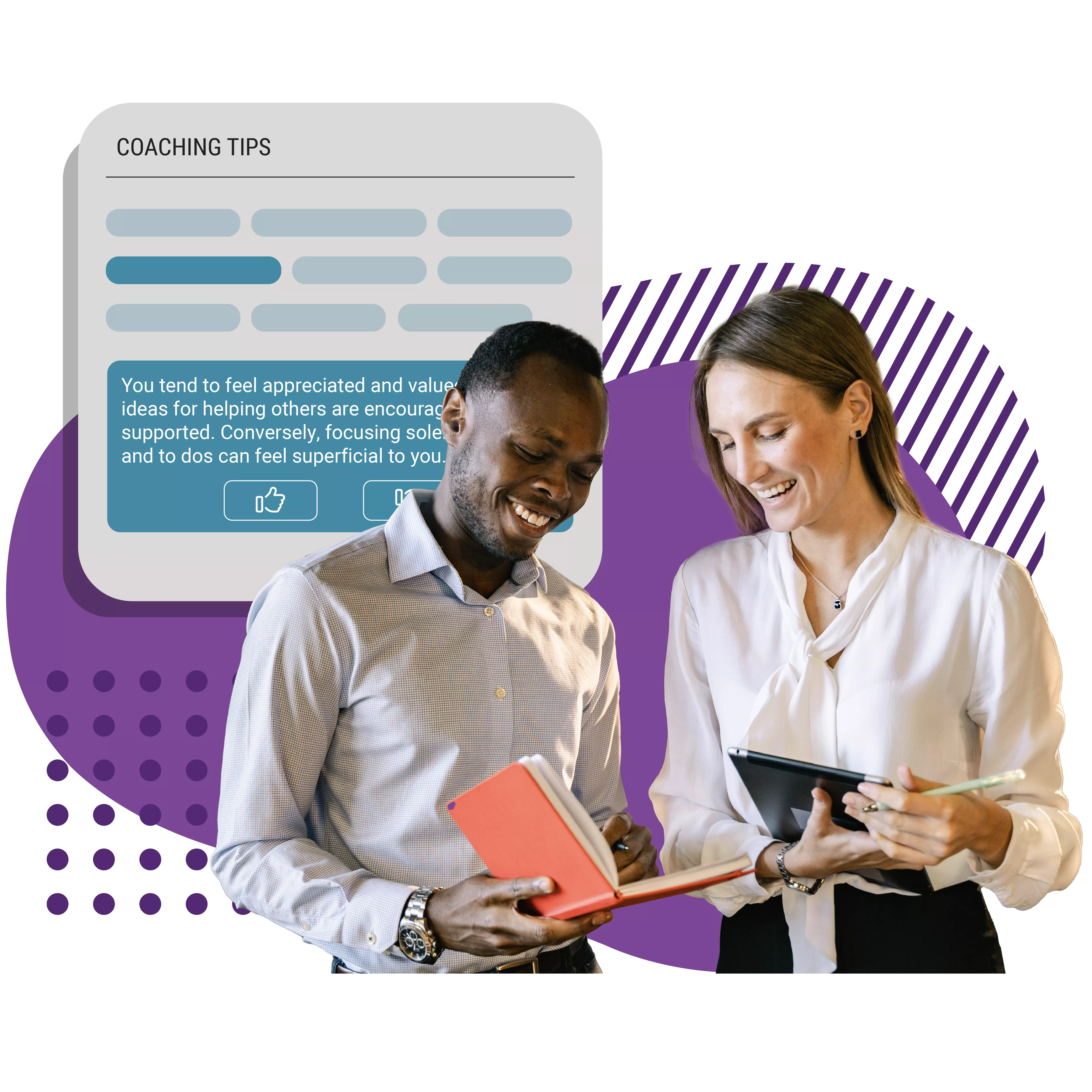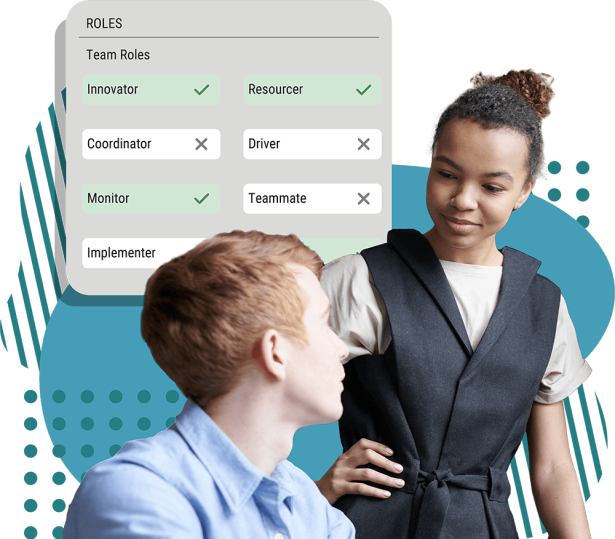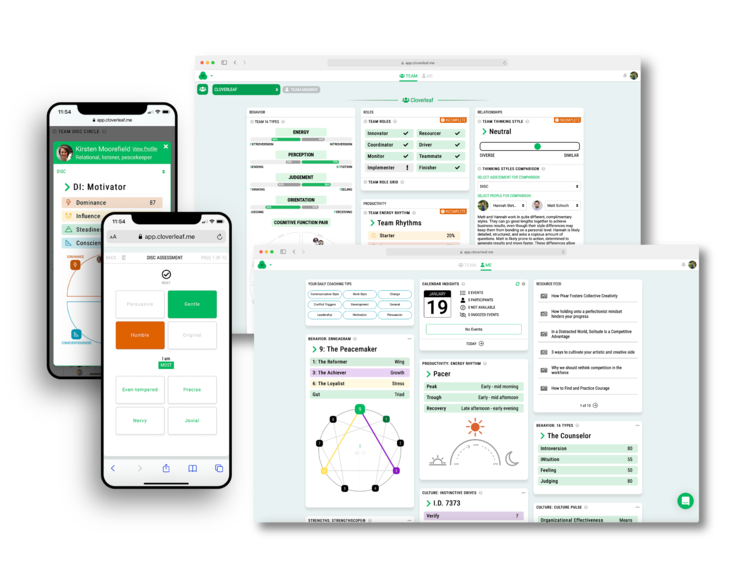Why do we care about trust in the workplace? Trust is a key currency of collaboration and employee engagement. It is the grease that makes the gears turn. When operating in a trusting environment, we feel comfortable sharing and being vulnerable with others and empowered to do our best work. We speak up, take chances, ask questions, and admit mistakes.
Trust serves as the lifeblood of collaboration and teamwork. When fostered appropriately, it paves the way for open dialogue, uninhibited innovation, and a company culture of high team performance and retention.
A team is not a group of people who work together. A team is a group of people who trust each other. – Simon Sinek
I spend most of my days as a founder and CEO working to build trust. Every conversation with employees, customers, investors, and partners is about building trust. In all those conversations, people are asking themselves, “Will this guy deliver on what he says, or is he full of crap?”
From my personal experience, I’ve come to understand that trust is not merely an aspirational goal but the very foundation on which prosperous organizations are built. Every conversation, whether it’s with employees, partners, or investors, becomes a testament to building and sustaining this trust.
KEY TAKEAWAYS
- Trust as Organizational Currency: Trust fuels collaboration and innovation, determining an organization’s momentum.
- Unveiling Transparency’s Depth: Beyond openness, transparency is about vulnerability, authenticity, and facing hard truths.
- Historical Lens on Trust: The emphasis on trust is an evolution shaped by centuries of business dynamics, not just a current trend.
- Emotional Intelligence and Communication: Two cornerstones that, when nurtured, lead to an environment of trust, understanding, and cohesive collaboration.
- Redefining Communication in the Trust Era: It’s about sharing information and ensuring alignment, understanding, and empowerment.

Building Trust In The Workplace: Unpacking Surface vs. Deep-rooted Trust
Of all the ways that I work to build trust during a normal workday, nowhere is the importance of trust more acute than in my experience in business partnerships. Cloverleaf has built a ton of partnerships. We have partnerships with assessment providers (see our full list of behavioral assessments), technology platforms, and coaching and consulting organizations. That is dozens of partnerships with some of the largest companies in the learning and development, coaching, and technology markets.
What is universal about starting and building those partnerships is that it takes a long time to find mutual alignment and earn trust. Often, these partners want to know that we are worth investing their personal time and the time of the people in their organization. Trust is the underlying metric that determines how much of that investment they make, and this only occurs over time.
Initial Impressions and Surface Trust:
At the onset of any professional relationship, we often rely on surface trust. Questions arise like, “Do I believe I know this individual?”, “Do we share common experiences or challenges?” or “Do their objectives align with mine?”. This preliminary layer of trust sets the stage for deeper connections.
Establishing genuine workplace trust demands more than just initial impressions. Collectively, it’s about consistently proving oneself over time, validating the trust others place in us. Trusting work relationships requires making larger trust deposits by consistently delivering on promises and upholding integrity. As the adage goes, “Trust takes years to build and seconds to break.” It’s a precious asset, demanding regular nurturing and commitment.

HUMAN SKILL PROGRAMS ARE HITTING LIMITATIONS...
- Close the widening gap between learning and on-the-job application
- Overcome the tension of pausing productivity for development opportunities
- Integrate learning so it is actually in the flow of work
- The evolution of human skill development
- What Automated Coaching™ is and how it works.
How To Build Trust In The Workplace
Trust is the backbone of a thriving workplace culture, laying the foundation for collaboration, mutual respect, and employee well-being. Building trusting work relationships often boils down to two key pillars: transparency and effective communication.
The Simple Equation For Building Trust In Your Organization:
Transparency + Effective Communication = Trustworthiness
Transparency: The First Component Of Cultivating Trust
Trust is precious, and regular investments in nurturing it are essential. The cornerstone of such investments is transparency. It serves as the bedrock upon which trust is built, fostering an environment of trust that encourages team members to collaborate without reservations.
The Diverse Forms Of Transparency:
Transparency manifests in various forms. Whether it’s detailing the reasoning behind specific decisions or being candid about one’s aspirations and concerns, transparency ensures mutual understanding.
People are keen, and it’s often obvious when decision-makers attempt to craft messages to present themselves in a certain light or obscure certain details. Team members can read right through this, and nothing will erode employee trust faster.
Without trust, conflict becomes politics, commitment becomes compliance, accountability becomes blame, and results just don’t matter. – Patrick Lencioni
True transparency entails an open, honest reflection on one’s decisions, ensuring collaborators know they’re not just part of a business transaction but a partnership built on trust.
The Rise of Organizational Transparency:
In recent years, transparency has shifted from being a recommended practice to an organizational imperative. The push for pay transparency, driven by glaring discrepancies in remuneration among genders and other underrepresented groups, serves as a prime example.
Lack of workplace transparency can have a negative impact on employee morale, experience, and engagement at work. Moreover, 50% of employees say that a lack of transparency holds their company back. This is why corporate communication functions should strive toward embedding workplace transparency into the corporate culture. – haiilo.com
This drive for transparency has cascaded into other domains, too, including board-level decisions, environmental practices, and supply chain operations. Such transparency trends, driven by legislation and market demands, signal a collective move towards a more transparent work environment.
Leaders across various industries can’t afford to ignore this growing emphasis on transparency. This momentum isn’t just about compliance with laws and professional practices; it reflects a broader societal shift valuing transparency. Leaders need to harness this drive, ensuring transparency becomes an integral part of their team and organizational engagement strategies.
Effective Communication: The Second Component Of Trusting Relationships
Building trust doesn’t stop at transparency. Effective communication is equally crucial, ensuring that transparency is practiced. It can be easy to overlook, but when organizations share information quickly lends to less stress and deeper levels of emotional trust felt among employees.
Bridging the Information Gap: The dangers of keeping teams in the dark:
Silence can sometimes be deafening, especially when critical decisions are at play. Leaders must avoid leaving an information vacuum, as it breeds assumptions and potential mistrust. Regular communication, tailored to your team’s context, can prevent such pitfalls.
Tailored Communication: Delivering the right message to the right audience:
Effective communication isn’t just about frequency but relevance. When significant changes arise, such as personnel adjustments, they must be communicated aptly. Direct, personalized messages for those most affected lay the foundation for trust. As you branch out to a broader audience, refining the message to suit their context is crucial.
Holistic Communication: Presenting complete information and addressing potential questions:
Trust isn’t built on half-truths. Leaders must ensure their communication provides a complete picture, addressing potential questions and concerns. Crafting FAQs, providing context, and explaining the ‘why’ behind decisions can fill any informational gaps, ensuring the team feels valued and informed.
Over-communicating strategy, especially the rationale behind key decisions, builds trust and fosters organizational buy-in, strengthening the bonds of mutual trust.

The Need For Creating A Culture Of Trust Is Nothing New
It’s essential to recognize that trust isn’t a modern-day phenomenon. Its importance in the workplace has roots stretching back over centuries. Understanding how trust has evolved historically, especially concerning transparency and communication, can provide invaluable insights into its ever-growing significance today. Consider how trust in the workplace has transformed and adapted to the changing landscape of business and society.
The Evolution of Transparency and Communication in the Workplace
The Industrial Era (Late 1800s – Early 1900s):
During this period, trust was hierarchical. Managers were expected to lead, and workers were expected to follow. There was little emphasis on transparency, as information was centralized. Communication was top-down, and workers rarely had a say in organizational decisions.
The Post-War Era (1950s – 1960s):
Post World War II, companies started to value teamwork as they grew in size. The hierarchical structure persisted, but there was an increased emphasis on collaboration. However, transparency was still limited to higher echelons of management.
The Technological Revolution (1980s – 1990s):
With the advent of computers and the internet, information became more accessible. This era marked the beginning of a shift towards a more open work environment. Communication tools started to evolve, and employees began to expect more transparency in organizational decision-making.
The Information Age (2000s – 2010s):
The rise of the internet, particularly social media, fundamentally altered the landscape of workplace communication. Employees could now communicate in real time, irrespective of geographical boundaries. The need for transparency grew as information could no longer be contained. Organizations faced scrutiny from both internal and external stakeholders.
The Modern Era (2020s):
In today’s world, transparency and open communication are not just desired but expected. With tools that facilitate instant communication and the rise of remote collaboration, organizations are prioritizing building trust with their employees. They recognize trust as the bedrock of collaboration, innovation, and organizational effectiveness.
The emphasis on psychological safety, a term popularized by teams at Google after their research during Project Aristotle, further emphasizes the need for trust. Employees today not only want to know organizational decisions but also want to have a voice in them. They seek authentic leaders who communicate transparently and foster an environment of mutual trust.
7 Ways To Practice Transparency & Communication To Create High Levels Of Trust
As organizations grow, the challenges of maintaining trust and cohesion across diverse teams intensify. Below are seven actionable strategies for supporting transparency and communication that leaders can use to ensure high levels of trust regardless of the organization’s size.

1. Regular Updates and Check-Ins:
In sprawling organizations, information can easily get siloed. By instituting regular communication channels, leaders ensure that every corner of the organization receives consistent and clear updates. This aligns teams and fosters a sense of unity and purpose.
2. Explain Decision-Making Processes:
Sharing the rationale behind significant decisions demystifies leadership actions, fosters understanding, and reduces the scope for rumors or misinformation.
3. Authentic Goal Sharing:
Clear communication about the organization’s direction ensures that all units, departments, or teams align their objectives harmoniously. It’s about sharing the goals, vision, and mission, creating a cohesive organization with clear expectations.
4. Address Discrepancies:
Discrepancies in large organizations can become systemic if not addressed. By regularly auditing and transparently addressing discrepancies, leaders ensure fairness and cultivate a culture of accountability and integrity.
5. Utilize Technology:
Leveraging platforms can streamline communication and project tracking across vast, dispersed teams. It ensures everyone, regardless of their position, has access to real-time, consistent information, enhancing transparency and efficiency.
6. Value Feedback:
Despite size and complexity, it is imperative to foster an environment where employees at all levels feel their voices can be heard by leadership. Feedback can bridge the gap between the C-suite leaders and team members.
7. Learning and Development:
Investing in training and development emphasizes a commitment to growth and transparency. In large entities, where the ripple effect of a lack of trust is significant. Organizations that proactively support improving employee experience by implementing trust-building tools can positively influence the entire organizational culture.
Cloverleaf’s Role in Fostering Trusting Workplace Relationships
At its core, Cloverleaf is designed to help teams quickly build trust. When team members understand each other and recognize their strengths, they can more easily work together.
By supporting self-awareness, you can reduce people-related issues. Trust is not abstract; it is a tangible feeling that teams can strengthen every day. When individuals can clearly see and know one another’s behaviors, communication styles, and strengths, it decreases the pull toward micromanaging and frustration among teammates.
Career pathing, often nestled within the broader concept of career development, stands out as a nuanced strategy pivotal for organizational effectiveness. Today, as employees discern between merely holding a job and advancing in a fulfilling career, companies grapple with the dual challenge of aligning talent aspirations with organizational trajectories.
The essence? It’s more than just mapping professional growth; it’s about weaving an individual’s vision into the fabric of the company’s future.
Career pathing is a symbiotic relationship between employees channeling their skills and desires in ways that resonate with the organization’s direction. It’s this cohesiveness that can galvanize teams, spark innovation, and lay the foundation for a thriving culture.
In this article, let’s demystify career advancement, illuminating its role in bridging the aspirations of individuals with the strategic direction of your business to foster an environment where mutual growth is not just encouraged but inevitable.
KEY TAKEAWAYS
- Navigating Career Nuances: Employee development aligns individual aspirations with organizational vision, bridging ambitions and company success.
- Impact of Career Pathing: A structured professional development framework yields business benefits, from being profitable to strengthening new skills within your team.
- Crafting the Right Framework: An effective career path requires a clear structure and technology, from organizational charts to e-learning platforms.
- Challenges Aren’t Roadblocks: Issues like resistance to change can be navigated with transparent communication and manager training.
- Building a Culture of Growth: Beyond strategies, a career pathing program should be ingrained in a company’s culture, emphasizing mutual growth and learning.

Career Pathing Vs. Career Development: Navigating the Nuances
Understanding the nuances between career pathing and career development is crucial for both organizations and employees. The distinction, though subtle, plays an imperative role in how individuals plan their career trajectories within and outside an organization.
What Is Career Pathing?
Career pathing within an organization means aligning an individual’s skills, talents, and desired areas of growth to the talent and business priorities of the organization. It’s about finding the intersection between an employee’s skills, talents, and desired growth areas with the company’s present and future needs.
This means the ways in which one wants to develop, move up, take on new responsibilities, etc., also have to match up with where the organization is headed, its current needs, and its anticipated needs.
3 Key Career Mapping Considerations:
- Strategic Alignment: How do an individual’s growth aspirations align with the company’s direction?
- Organizational Fit: Are there current or anticipated roles that match the individual’s desired path?
- Skill Evolution: What skills or competencies must the employee develop to fit into these roles?
For instance, if an employee is keen on stepping into a leadership role, career pathing would involve understanding whether there are leadership opportunities within the organization. Likewise, if someone is contemplating a shift in function, the question becomes whether lateral moves are possible and beneficial.
Career Development: A Broader Horizon
Career development, in general, may refer to an individual who is looking at developing their career holistically and independently from a specific organization. While these terms tend to be used interchangeably at times, the distinction here is important.
While career pathing is organization-centric, career development adopts a more holistic perspective, independent of any specific organization. It’s about the larger journey of a professional, which could span multiple roles, organizations, or even industries.
Consider an individual who envisions a future working independently or transitioning to a larger enterprise for more expansive growth opportunities. This vision falls under the umbrella of career development. Such aspirations might not always align with the immediate objectives of their current organization, potentially leading to misaligned expectations.
Aligning Individual Aspirations with Organizational Objectives
Employees may find themselves at a crossroads when their career aspirations don’t sync with the needs of their organization. This misalignment can lead to frustration and a sense of stagnation. Hence, it’s crucial for both parties to have transparent conversations.
For employees, it’s about introspection and open dialogue:
- Am I looking for growth opportunities strictly within my current organization, or am I open to broader horizons?
- How can I better align my aspirations with the organization’s needs?
- If I am interested in a different function, can I move laterally?
- What potential roles or functions can I explore to maximize my impact on the team and the broader company?
On the flip side, organizations should encourage performance management conversations, ensuring employees feel valued, understood, and aligned with the business’s trajectory. This approach ensures mutual growth and strengthens organizational culture and employee retention.
In summary, while career pathing and career development share overlapping territories, discerning the differences is crucial. It paves the way for more informed decisions, clearer communication, and a harmonious balance between individual aspirations and organizational objectives.

HUMAN SKILL PROGRAMS ARE HITTING LIMITATIONS...
- Close the widening gap between learning and on-the-job application
- Overcome the tension of pausing productivity for development opportunities
- Integrate learning so it is actually in the flow of work
- The evolution of human skill development
- What Automated Coaching™ is and how it works.

The Tangible and Intangible Benefits of Career Pathing
A Catalyst for Organizational Growth
Career pathing isn’t just a buzzword thrown around in human resources. It’s a strategic initiative that goes beyond employee well-being and satisfaction, driving critical business outcomes. When implemented effectively, career pathing can translate into significant bottom-line benefits, transforming how an organization thrives in an ever-competitive market.
Career Pathing: Beyond Just Retention
1. Aligning Vision with Action: Organizations in the modern era are facing an evident demand: the workforce is seeking more than just a paycheck. People want and expect development opportunities, meaningful work, empowering cultures, and a supportive environment that aligns with their core values. Career pathing can address this demand head-on, allowing employees to envision a brighter future within the organization, subsequently fostering loyalty and commitment.
2. Building Organizational Loyalty and Trust: Personal and professional relationships thrive on mutual trust and loyalty. Imagine having an ally, someone you can wholeheartedly trust and who champions your cause. In an organizational setting, when employees feel this profound sense of loyalty, their commitment and dedication to the company’s success know no bounds. They’re more likely to go the extra mile, not out of obligation, but out of genuine care and alignment with the company’s vision.
3. Tangible Business Outcomes: While fostering a positive work culture and enhanced employee morale are noteworthy, career pathing also delivers tangible benefits:
- Profitability Boost: Engaged employees, driven by a clear career path, often exhibit higher productivity levels. Higher productivity means better service or product quality, ultimately leading to increased profitability.
- Reduced Turnover: With a clear career trajectory, employees are less likely to seek opportunities elsewhere. This reduces recruitment costs and can increase employee engagement.
- Bridging Skill Gaps: By identifying the desired paths of employees, organizations can offer targeted training and development programs. This caters to individual growth and addresses the skill gaps within the company.
4. Creating an Empowering Environment: A company that values and prioritizes career pathing is often perceived as forward-thinking and employee-centric. This perception can create an empowering environment where leaders are engaged, communication is transparent, and individuals feel valued. Personal accountability, performance, and engagement naturally soar within such an environment.
Career pathing stands at the intersection of individual aspirations and organizational growth. Its benefits, both tangible and intangible, are hard to overlook. As organizations brace themselves for the challenges of the modern world, career pathing can help illuminate the way towards mutual success and growth.
Crafting a Comprehensive Career Pathing Framework
The Foundation of Employee Satisfaction
In an ever-evolving workplace, a structured career pathing framework is no longer an option but a necessity. Such a framework doesn’t merely provide a direction; it intertwines employee aspirations with organizational goals, driving a direct link to job satisfaction and overall employee well-being.
7-Step Career Pathing Framework
1. Starting from the Back: Organizational Chart and Job Descriptions
Before diving into individual career paths, aligning the organization’s structural underpinnings is crucial. An updated organizational chart provides clarity on the hierarchy, team alignment, and the available progression routes. Likewise, having a consistent framework for job descriptions ensures that expectations are clear from the outset.
Each job description should clearly list the competencies vital for success. This doesn’t only include technical skills but also the softer, often overlooked interpersonal and leadership skills. Recognizing that leadership is as much about people management and group dynamics as expertise ensures holistic career development.
2. Visualizing Departmental Career Progressions
By mapping out specific progressions within departments, employees gain a visual understanding of their potential growth path. This visualization is pivotal for motivation and clarity. Moreover, showcasing how skills acquired in one function can be transferable to another promotes flexibility and cross-functional growth. For instance, the competencies honed in marketing operations might seamlessly translate to a role in marketing analytics.
3. Aligning with Learning and Development
Once the career paths are outlined, it’s essential to compare them with the organization’s current learning and development initiatives. Does the company offer sufficient opportunities to equip employees with both the hard and soft skills necessary for role advancement? Identifying gaps and ensuring the alignment of developmental opportunities with career objectives is paramount.
4. Onboarding with a Vision
A new employee’s introduction to the organization should be about their current role and the company’s future potential. An onboarding process that aligns with career pathing objectives sets a precedent for growth from day one.
5. The Drive for Continuous Upskilling
In today’s rapidly changing corporate landscape, static skill sets quickly become obsolete. Emphasizing the importance of continuous upskilling and certifications—achieved through avenues like webinars, workshops, and courses—ensures employees remain agile and relevant.
6. Effective Communication and Training
A framework is only as good as its implementation. Regularly communicating the importance of career pathing and training both leaders and individual contributors on how to facilitate related conversations is critical. Establishing a dedicated leader or team to oversee the framework’s execution and training ensures consistency and commitment.
7. Evaluating and Iterating the Framework
The career pathing framework shouldn’t be static. Regular evaluations through methods like pulse surveys help understand its effectiveness and improvement areas.
Questions to consider include:
- Are leaders actively using it?
- Do employees understand and resonate with it
- How frequently is it highlighted in company-wide communications?
A meticulously crafted career pathing framework is more than just a tool—it’s a commitment. A commitment to employees that their growth matters and a pledge by the organization to provide clear, achievable paths towards that growth. In this mutual journey of development, both parties flourish, resulting in a harmonious, productive, and future-ready workplace.
Strategies for Effective Career Pathing: Leaders and Employees
Two-Way Street of Career Pathing
Navigating one’s career path is a collaborative effort. While organizational strategies shape the general direction, individual desires, and aspirations add depth and meaning to this journey. Effective career pathing necessitates a blend of top-down leadership directives and bottom-up employee initiatives.

Career Pathing Best Practices for Leaders…and Employees!
1. For Leaders: Coaching Beyond the Framework
Having a robust career pathing framework is foundational, but it’s the personal touches leaders add that truly make a difference. Adopting a coaching approach means actively listening, especially when employees express concerns or seek challenges.
- The Power of Questions: Asking thought-provoking questions can unlock hidden desires and goals. Questions like, What would you love to explore in your role? or, Which of your skills do you believe is underutilized? can shed light on unseen growth areas.
- Listening Beyond Conversations: As projects or new initiatives surface, astute leaders match these opportunities with employee talents and career goals, ensuring alignment and fulfillment.
2. For Employees: Charting Your Path
While organizational support is crucial, taking charge of one’s own career progression is equally important. Here’s how:
- Vocalize Your Aspirations: Use every interaction, from one-on-one meetings to skip-level discussions, to voice your growth desires.
- Be Proactive: Even if there’s no formal pathing structure, initiate the dialogue. Explore both internal and external opportunities to grow.
- Feedback is Gold: Regularly seek feedback, embrace diverse perspectives, and hone your ability to adapt and evolve.
- Networking: Building and maintaining relationships within the organization is paramount. An insightful conversation today could unlock a door tomorrow.
3. The Role of Mentorship
Mentorship programs offer invaluable guidance, helping employees navigate their careers with the wisdom of someone who’s been there. Such programs not only provide direction but also strengthen bonds within the organization.
4. Performance Reviews with a Career Focus
Regular performance reviews shouldn’t be just about past accomplishments. They should be forward-looking, with career paths as core discussion points for mentoring and guiding employees toward their next milestones.
Fostering a Culture of Continuous Career Growth
The Pivotal Role of Organizational Culture: A company’s ethos significantly impacts career pathing. It’s an invisible force that can either fuel aspirations or stifle them. It’s imperative for organizations to foster a culture where career growth isn’t just encouraged—it’s ingrained.
Cultivating A Learning Culture
In an environment that prizes learning, career pathing is not an added benefit—it’s a natural outcome. Such a culture views individual, leader, and team growth as indispensable investments.
- Reflection of Learning: When an organization truly values learning, career pathing becomes second nature. It’s not merely a structured process but a manifestation of the company’s commitment to individual growth.
- Satisfaction and Success: A learning culture and tangible growth opportunities escalate job satisfaction. And as employees flourish, it’s mirrored in positive business outcomes.
For an organization to thrive, both leaders and employees must share the commitment to continuous growth. With the right practices, mentorship, and an unwavering focus on learning, career pathing can become the compass guiding everyone towards their best selves.
4 Challenges and Solutions in Implementing Career Pathing
Navigating the Roadblocks
Just as any journey is bound to face obstacles, the road to effective career pathing isn’t always smooth. Organizations often confront myriad challenges—from ingrained resistance to evolving dynamics. Identifying and preempting these challenges with effective solutions is key to creating a robust career pathing framework.

1. Resistance to Change
Challenge: One of the most common barriers is resistance to change, especially in established organizations with deep-rooted processes and hierarchies. Employees and even leaders can be apprehensive about shifting paradigms.
Solution: Cultivate a culture of adaptability. Begin with awareness campaigns, workshops, and discussions to underline the benefits of career pathing—for the individual, teams, and the organization as a whole. Also, share success stories where career pathing made a positive difference.
2. Lack of Clear Communication
Challenge: Even the best-laid career pathing plans can become convoluted without clear communication. Ambiguity can lead to misunderstandings and missed opportunities.
Solution: Establish open channels of communication. Regularly update all stakeholders about career pathing’s developments, benchmarks, objectives, and advantages. Foster an environment where employees feel comfortable discussing their career aspirations and uncertainties.
3. Inadequate Manager Training
Challenge: Managers play a pivotal role in facilitating career pathing. However, without proper training, they might struggle to guide their team members effectively.
Solution: Invest in comprehensive training programs for managers, equipping them with the tools and knowledge to steer employee career pathing discussions, understand their aspirations, and match those with organizational needs. To help you start, check out the post: The Managerial Readiness Playbook.
4. Misalignment of Personal and Organizational Goals
Challenge: There can be situations where an employee’s career aspirations don’t align with the organization’s immediate needs or long-term vision.
Solution: While it’s crucial to prioritize organizational objectives, it’s equally important to value individual employee’s aspirations. Create flexible career pathing frameworks, allowing some level of adaptability to cater to unique talents and goals.
The Role of Technology: Making Career Pathing Seamless
Technology can be a game-changer for designing career pathing opportunities in this digital age.
- Data-Driven Insights: Use analytics tools to identify skill gaps, track employee progress, and predict future skill requirements. This not only adds precision to the process but also helps in making informed decisions.
- Digital Roadmaps: Interactive platforms can visualize potential career paths, allowing employees to explore different trajectories, understand required skills, and plan accordingly.
- E-learning Platforms: As upskilling is integral to career planning, integrating e-learning platforms can facilitate continuous learning, ensuring employees are always ready for the next step.
- Feedback Mechanisms: Implement technology-enabled feedback tools to gather real-time insights on the effectiveness of the career pathing process, facilitating continuous improvement.
While challenges in implementing career pathing are inevitable, they aren’t insurmountable. With a proactive approach, clear communication, and the leverage of technology, organizations can create a dynamic and responsive career pathing framework that resonates with both their vision and their employees’ aspirations.
Charting the Course to Organizational Excellence
Navigating the intricate landscape of career pathing might seem daunting, but its rewards are manifold and far-reaching. By understanding the pivotal role of a structured career pathing framework, organizations not only unlock doors to heightened employee satisfaction but also pave the way for increased productivity, reduced turnover, and a robust employer brand.
But it’s not merely about setting up a system; it’s about fostering a culture. A culture where growth is not a mere aspiration but an ongoing journey. Where leaders listen actively, and employees champion their career ambitions. Where challenges are viewed as stepping stones, and technology is harnessed to streamline, simplify, and magnify the process.
In the end, career pathing is more than just a strategic tool—it’s a testament to an organization’s commitment to its people. It signifies a promise that every individual’s career voyage matters and that the organization is a willing and proactive co-traveler in that journey.
Leading people is no small feat, especially when you’re at the helm of a vast organization. As someone responsible for steering People Strategy in big enterprises, you’ve undoubtedly felt the weight of ensuring that every team member, from the fresher to the veteran, feels seen and heard. It’s not just about empathy; it’s about business. Research consistently shows that companies that actively foster a sense of belonging and inclusivity tend to outperform their competitors.
What happens when employees are heard and cared for in ways that are meaningful to them?
The best companies experience half the turnover as their peers and have employees who are six times more likely to help recruit talent. Eighty percent of employees on the best companies list look forward to coming to work and feel psychologically and emotionally healthy. Ninety percent say their company is a great place to work, and they feel cared for. At average workplaces, 52% of employees feel management sincerely cares about them as a person, and 57% say their workplace is great. – Michael C. Bush
But how do we translate this knowledge into actionable insights and strategies? Drawing from real-life stories and grounded in expertise, this piece is tailored to help people leaders like you navigate these waters with confidence.
Key Takeaways
- The Business Case for Belonging: Companies prioritizing belonging consistently outperform rivals with lower turnover and greater productivity, potentially saving millions annually.
- Employee Well-being: A culture of psychological safety boosts innovation, reduces stress, and improves job satisfaction and health.
- Retaining Leads To Loyalty: A strong sense of belonging is pivotal in reducing turnover and retaining invaluable expertise in the organization.
- Inclusivity Beyond Team Cohesion: It’s essential to value every employee’s uniqueness, ensuring all feel seen and valued regardless of demographics.
- Intentional Actions to Create Belonging: Strategic efforts, like appreciating individual contributions and empowering decision-making, create an environment where everyone thrives.

Why is Belonging So Important in the Workplace?
1. Enhancing Psychological Safety Fosters Better Employee Well-being
A culture that promotes psychological safety is at the heart of every thriving organization. This term, popularized by organizational behavioral scientist Amy Edmondson, underscores the value of an environment where individuals feel comfortable taking interpersonal risks. But what does this have to do with belonging?
Belonging is more than just fitting in; it’s about feeling safe to be one’s authentic self without the fear of retribution or ostracization. When employees genuinely feel they belong, they are more likely to voice their opinions, express concerns, and share innovative ideas. This is deeply intertwined with their mental health and overall fulfillment.
An environment lacking in belonging can lead to feelings of isolation, stress, and burnout, ultimately hampering the mental wellness of the workforce. Recent studies suggest that employees in psychologically safe environments, characterized by mutual respect and trust, exhibit better health, lower stress levels, and higher job satisfaction.
2. Elevate Employee Engagement and Increase Job Satisfaction
A deep sense of belonging doesn’t just enhance mental well-being—it also supercharges employee engagement and satisfaction. Think about it: When you feel valued, heard, and genuinely part of a team, aren’t you more motivated to give your best?
Employees who believe they belong are more likely to go the extra mile, display loyalty to their organizations, and commit to their roles. Their satisfaction is tied to their paycheck and the deeper, intrinsic reward of being part of something bigger. A survey from 2021 indicated that employees who felt a strong sense of belonging were twice as likely to be highly engaged in their roles compared to those who did not.
3. Improve Retention Rates and Reduce Turnover
Retention is a pain point for many large organizations. Hiring high-potential employees is one thing, but retaining them? That’s a different ball game. Here’s where the magic of belonging plays a crucial role.
Employees who don’t feel they belong or are not valued are more likely to seek opportunities elsewhere. Most of the time, it’s not always about better compensation or a fancier job title. More often than not, the underlying reason is the lack of connection, recognition, or a sense of purpose in their current roles. Businesses that prioritize belonging can experience a significant drop in turnover rates, saving them not only monetary costs but also the invaluable experience and knowledge that employees carry with them.
4. Significant Surge in Overall Productivity
Lastly, let’s talk numbers. While belonging might seem like an abstract concept, its impact on productivity is tangible. Employees who feel they belong are not just happier; they’re more productive. They collaborate better with their peers, show increased creativity, and tackle challenges with greater resilience.
When employees genuinely experience belonging, the positive impact on an organization’s financial health is profound. A strong sense of belonging has been associated with a remarkable 56% boost in job performance, a notable 50% decrease in the likelihood of turnover, and an impressive 75% fewer sick days taken. To put this into perspective, for an organization with 10,000 staff members, these benefits translate to an annual financial saving exceeding $52M. – Harvard Business Review
The correlation is evident: when individuals feel valued and know their contributions matter, they bring their A-game to the table.

HUMAN SKILL PROGRAMS ARE HITTING LIMITATIONS...
- Close the widening gap between learning and on-the-job application
- Overcome the tension of pausing productivity for development opportunities
- Integrate learning so it is actually in the flow of work
- The evolution of human skill development
- What Automated Coaching™ is and how it works.

Understanding the Current State of Your Company Culture
Understanding Workplace Belonging:
Fostering a sense of belonging in the workplace might sometimes come across as intangible or trivial. Perhaps you’ve questioned its significance, wondering, “Is it genuinely essential? How do I cultivate it, and how can its impact be measured?” The answer lies in our innate human desire: our yearning to connect, to be recognized, and to form bonds and attachments. This longing for belonging is a profound and primal motivator.
A Personal Reflection on Belonging:
Reflecting on my journey, working at Cloverleaf has been incredibly fulfilling. My immense pride in being associated with the organization stems from our achievements and the deep belonging I feel here. My teammates appreciate me for who I am, celebrating my unique attributes that, in different contexts, might have been perceived as “too much.” My enthusiasm, ambition, and compassion are accepted, celebrated, and harnessed here.
Still Not Convinced About The Importance Of Belonging? Consider This…
To understand the gravity of belonging, think back to your early years, perhaps junior high. For many, it was a time characterized by the intense desire to fit in and the crushing weight of exclusion when one didn’t.
Remember that feeling? The stark difference between the warmth of inclusion and the cold sting of isolation? That’s the magnitude of belonging we’re discussing here.
Belonging isn’t just about avoiding exclusion. It’s about the positive affirmations we receive when someone appreciates our quirks, laughs at our jokes, or supports our endeavors. It’s about feeling valued, cherished, and seen. In the workplace, it’s about recognizing every individual piece and understanding how indispensable it is to the bigger picture. That’s the essence and impact of belonging we aim to cultivate in our professional environments.
3 Areas Of Focus For Creating Belonging In The Workplace
1. Assess Your Employee Experience
Belonging isn’t just a term; it’s a heartfelt sentiment. It encapsulates the emotions of being seen, valued, and supported. Our day-to-day interactions play a crucial role in fostering this sentiment. It’s interwoven in the way people communicate, share ideas, and engage with one another during team meetings and even informal check-ins.
An effective way to understand this more deeply is by diving into the employee experience. You don’t need an elaborate survey or a webinar to start. Instead, initiate an open conversation with a teammate. Encourage them to share their experiences, perhaps shedding light on instances where they might’ve felt isolated or excluded. Discover their perspectives on these feelings and understand their methods of enduring such challenges. Such feedback is vital for our decision-making process to foster belonging.
Should you uncover instances of exclusion or isolation, it’s essential to correct this trajectory. By engaging in open communication, you can delve into the nuances of their experience. Ask them how they felt during these moments, how they managed, and what changes might enhance their well-being.
2. Appreciate The Uniqueness Of Each Individual On Your Team:
Remember, fostering a feeling of belonging is not just about team cohesion but also acknowledging and celebrating individuality. This act of recognizing each employee’s uniqueness—regardless of their demographics—is a testament to inclusive leadership and workplace culture.
Every individual wants their unique contributions to be seen and valued. By understanding and appreciating each teammate’s varied strengths, backgrounds, and personalities, we set a robust foundation for true inclusivity. Thus, belonging becomes about feeling seen, valued, and supported at every level.
3. Value Work-Life Balance
The surge in remote work has opened up new challenges and opportunities in fostering belonging. Physical distance might lead to feelings of disconnect, but ensuring that the culture of belonging permeates even virtual spaces is essential. Regular one-on-one’s, team-building activities, and open channels for team members to experience remote collaboration can bridge this gap.
When an employee says, “My uniqueness was seen, and my team valued it,” it’s a testament to the effectiveness of your initiatives, whether in a traditional office or a remote setting.
Moreover, maintaining a work-life balance directly impacts an employee’s overall sense of fulfillment and peace of mind. By recognizing the importance of this balance, especially in a hybrid work model, leaders can reinforce the values of support and understanding, essential components for fostering high belonging.
10 Ways for Leaders To Foster Belonging and Inclusivity in the Workplace
A sense of belonging doesn’t just emerge; it’s cultivated through intentional actions and strategies. This section delves into practical tips that leaders can integrate into their management repertoire, ensuring that each member feels anchored, valued, and an integral part of the collective team journey.

Foster Belonging through Team Building:
1.See, Acknowledge, and Value Uniqueness:
- Use resources like Cloverleaf to identify and acknowledge your team’s unique traits.
- Go beyond recognizing to actively appreciate their contributions. This might include public affirmations like a shout-out in a Slack channel.
- Instill a coaching approach to further draw out their best selves.
2. Support Growth and Provide Opportunities Aligned with Strengths:
- Use tools like CliftonStrengths to understand strengths and leverage them.
- Allow projects that ignite passion, tapping into individuals’ key strengths.
3. Engage in Authentic Conversations and Foster Genuine Presence:
- Encourage open dialogues about feelings, values, and authenticity.
- Prioritize genuine interaction, being fully present, and valuing the individual over the task.
4. Educate on the Value of Belonging and Balance with Productivity:
- Emphasize how feelings can drive change and enhance productivity.
- Recognize the balance needed between accomplishing tasks and valuing individuals.
5. Empower Employees to Shape Solutions:
- Engage in collaborative strategy-building for fostering belonging.
- Take feedback seriously, merging personal development opportunities with business needs.
6. Engage in Regular One-On-Ones:
- Facilitate both peer and manager-employee interactions to strengthen team bonds.
- Use themes or topics to guide deeper, more meaningful conversations.
7. Initiate Team-building Activities:
- Encourage cross-functional brainstorming.
- Host collective learning sessions like webinars for a shared experience.
8. Support Remote Collaboration and Engagement:
- Create space for informal chats on platforms like Zoom or Slack.
- Ensure proficiency with collaboration tools, offering regular training sessions.
9. Promote and Support Employee Resource Groups (ERGs):
- Highlight different ERGs monthly, sharing their achievements and goals.
- Encourage projects that align with both ERG goals and company culture.
10. Highlight Success Stories and Achievements:
- Share stories that emphasize the organization’s values in action.
- Provide platforms where team members can showcase moments of pride and support.
The steps outlined here serve as more than just directives; they’re a commitment to recognizing the multifaceted tapestry of individuals that make up a team. Leaders enhance productivity by valuing uniqueness, championing growth, creating spaces for authentic conversations, and crafting a nurturing environment where everyone thrives.
Final Thoughts
The heart of an organization lies not just in its operational excellence but in its culture. A culture of belonging is not merely a perk or a box to check off; it’s the lifeblood that fuels every contributor’s passion, commitment, and innovation. This sense of belonging, of feeling seen, valued, and supported, shapes not only individual fulfillment at work but the overall trajectory of a company.
To the leaders reading this: Your role transcends traditional HR tasks. You are the torchbearers of your organization’s culture. With the ever-evolving dynamics of the workplace, are we valuing the person for their work and as someone with intrinsic worth?
In the intricacies of your organization, every individual is a unique and essential piece. Your organization can truly realize its full potential when each person feels acknowledged, cherished, and valuable.

In an era where the workforce landscape is rapidly shifting, the essence of the modern workplace is no longer solely defined by the tasks we perform or the titles we hold. More than ever, our experiences define it, the connections we forge, and the respect and voice we’re granted within our organizations.
The transformation we’re witnessing is not only about technological advancements or new business models. It’s about the people—their feelings, aspirations, and the environments where they spend most of their waking hours. And whether their organizations realize the impact of employee listening efforts.
While statistics paint a vivid picture of job turnover, the reasons behind it, and how to reduce its impact, they only scratch the surface. Behind every number is a narrative of an individual seeking more than just a paycheck—a quest for respect, inclusivity, and a meaningful role within their organization.
The age-old adage, “People don’t leave jobs, they leave managers,” has never been more pertinent. But this sentiment is evolving. Today, it’s not just about the manager—it’s about the entire workplace ecosystem.An ecosystem where employee engagement strategy and experience are not mere buzzwords but fundamental building blocks of a successful and sustainable business.
It’s a time when organizations are called to do more than provide jobs. They are entrusted with crafting experiences and, more importantly, genuinely listening to their most valuable asset—their employees.
As we delve deeper into the essence of employee listening, we’ll uncover its profound significance in shaping this new era of work and why it’s more critical than ever for organizations to hear, actively respond, and adapt.
KEY TAKEAWAYS
1. The Depth of Employee Listening Matters: Beyond merely collecting feedback, true employee listening involves intentionally understanding and acting on employee sentiments.
2. Understanding What Employees Value Is Imperative: Today’s employees seek more than just a paycheck; they value respect and a sense of belonging. Organizations that listen effectively benefit from higher retention rates, greater productivity, and a stronger brand reputation.
3. Strategic Listening Is Ongoing: Successful employee listening isn’t about one-off surveys. It demands a systematic approach involving real-time feedback mechanisms, followed by demonstrable actions.
4. Tailor Your Strategy For Your Organizational Needs: While the importance of listening is universal, the methods must be personalized to fit an organization’s unique culture and objectives.
5. The Leadership’s Role Is Paramount: For any listening initiative to be successful, leaders need to be engaged, responsive, and self-aware.

Understanding Employee Listening
What Is Employee Listening?
Employee listening in a conscious and intentional effort to capture and respond to employee feedback regularly. This commitment goes beyond merely deploying surveys or periodic feedback sessions. Because a survey, no matter how comprehensive, is only as valuable as the actionable insights derived from it and meaningful action to follow up in response to them.
The Disconnect in Current Workplaces:
A silent disconnect often festers within modern workplaces amid the bustling hallways and busy schedules. Recent statistics are alarming—The Pew Research Center highlighted that a staggering 57% of individuals who resigned from their roles cited feelings of disrespect as their primary reason.
The Workforce Institute’s global survey 2021 sheds further light on this issue, revealing that 86% of employees believe their concerns and voices are not heard fairly or equally in their workplaces.
Implications of Neglecting Your Employee’s Voice:
Ignoring the employee voice doesn’t just result in attrition or dissatisfaction—it breeds an environment where innovation is stifled, morale is consistently low, and the organization’s growth is stunted. In such a climate, not only does talent drain become a recurrent issue, but the fabric of the organization’s culture begins to erode. When employees don’t feel valued or heard, they often retreat into shells of minimal effort, contributing only what’s necessary.
The ripple effects are far-reaching, from burnout to deteriorating customer service. And in an era where brand reputation is intricately linked with employee advocacy, this neglect can significantly impact an organization’s external image and customer trust.
The Imperative for Employee Listening in Today’s Age
A. Emotional and Practical Factors
The Shift from Paycheck-Driven Jobs to the Quest for Respect and Meaningful Work
There was once a time when most of the workforce clocked in and out, primarily motivated by the prospect of a monthly salary. While remuneration remains critical, today’s employees, influenced by socio-cultural shifts and increasing global connectivity, crave more than just monetary rewards. They seek respect, inclusivity, and the chance to contribute to a meaningful purpose. Platforms like LinkedIn and various podcasts often showcase stories of professionals transitioning from high-paying roles to ones that align better with their values and aspirations. Such narratives underscore the magnitude of this shift in employee expectations.
The High Costs of Turnover and the Financial Imperative to Listen
Turnover is not just an HR term; it’s a significant business concern. Beyond the direct costs of hiring and onboarding, there’s a loss of institutional knowledge, a potential decline in team morale, and disruption to project timelines. All these factors translate to dollars. In today’s era, with platforms amplifying employee perceptions and experiences, organizations cannot simply replace employees; they must retain them. An essential step toward retention? Listening. It’s no longer just about HR leaders understanding employee needs; it’s about business leaders realizing that listening directly impacts the bottom line.
B. Call to Action
Highlighting the Responsibility of Organizations to Act and Bridge the Gap
The data speaks clearly: many employees feel their voices are stifled or unheard. In an age where transparency is highly valued and platforms like Glassdoor expose organizational cultures, it’s more critical than ever for organizations to address this disconnect.
The call isn’t merely for annual engagement surveys or one-off focus groups. It’s a call for continuous employee listening strategies embedded in the fabric of the employee life cycle. It’s about making feedback part of decision-making processes, benchmarking against best practices, and ensuring that action plans derived from feedback are effectively communicated and implemented. Organizations, stakeholders, and business leaders must realize that effective employee listening isn’t just an HR initiative—it’s a business imperative.

HUMAN SKILL PROGRAMS ARE HITTING LIMITATIONS...
- Close the widening gap between learning and on-the-job application
- Overcome the tension of pausing productivity for development opportunities
- Integrate learning so it is actually in the flow of work
- The evolution of human skill development
- What Automated Coaching™ is and how it works.

Constructing an Effective Employee Listening Strategy
In the labyrinth of organizational growth and sustainability, the employee’s voice emerges as a guiding beacon. It’s not just about what employees say but how organizations interpret and act upon this feedback.
Crafting a robust employee listening strategy is more than just a nod to modern HR practices; it’s an acknowledgment of the immense value that employees bring to the table, not just in labor but also insights, perspectives, and innovative ideas.
In an age dominated by digital transformation and rapidly evolving work paradigms, understanding and implementing effective listening strategies can mean the difference between a thriving organization and one merely surviving.
As we delve into this section, we’ll explore the pivotal components of such a strategy, looking beyond traditional approaches and emphasizing the importance of action, transparency, and continuous evolution.
A. Move Beyond the Annual Survey
Continuous Listening Tools:
Once the cornerstone of employee feedback, the annual survey is no longer enough. In an era of immediacy, tools like pulse surveys, one-on-one meetings, engagement surveys, and performance conversations have become paramount. These instruments allow organizations to tap into the real-time sentiments of their employees, offering insights that can shape strategies on-the-fly.
The Role of Real-Time Feedback:
A constant stream of feedback is invaluable to inspiring collaboration in the workplace. It can accurately reflect workplace sentiments and enables organizations to act quickly, preventing minor concerns from snowballing into major organizational issues.
B. Transform Feedback Into Action
Importance of Ownership, Analysis, and Actioning of Feedback
Gathering feedback is only half the battle. The true challenge lies in its analysis and subsequent action. Organizations must have transparent systems and dedicated teams to collect and act upon feedback.
The Critical Aspect of Showing Employees Their Feedback Matters
Employees need to see tangible outcomes from the feedback they provide. This validates their concerns and encourages further participation in feedback loops, leading to a more engaged and invested workforce.
C. Measure The Reporting and Practice Accountability
Transparency in Results and Initiatives
Openness is key. Employees should be privy to what their feedback has led to – what changes are being implemented, what concerns are being addressed, and which areas still require attention.
Allocating Budget and Resources Towards Actionable Insights
An organization must allocate a budget and resources for feedback to transition into actionable steps. This financial commitment underscores the importance of a continuous listening strategy in organizational decision-making.

Case Study: Microsoft’s Employee Listening Evolution
Like many leading organizations, Microsoft initially centered its HR metrics around employee engagement. But, recognizing the evolving needs of the modern workforce and the limitations of traditional engagement metrics, they pivoted.
Microsoft defines employee thriving as “to be energized and empowered to do meaningful work.” Their journey moved beyond mere engagement, focusing on a more holistic measure of employee well-being and satisfaction, which they encapsulated in the term “thriving.”
Case Study Take-A-Ways
Microsoft Leveraged Survey Data for a Holistic Employee Experience:
Microsoft’s approach stood out because it didn’t treat feedback as a passive data point. Instead, they used it as a catalyst for change. Integrating employee feedback with their organizational strategies ensured that the insights gained directly informed their policies and practices. This integration was evidenced by their transparent leadership communications and their iterative changes in response to feedback.
Emphasis on Fostering a Growth Culture and Employee Thriving:
Microsoft’s transformation wasn’t just conceptual but actionable. Their commitment to “thriving” was demonstrated by tangible initiatives. From tailored professional development programs to team-building exercises, Microsoft responded proactively to feedback, demonstrating their dedication to fostering an environment where employees could flourish.
Lessons for Other Organizations
Microsoft’s approach to employee listening and its subsequent actions provide valuable lessons.
Their transformation underscores:
1. The Power of Continual Feedback: It’s not about a one-off survey but an ongoing conversation.
2. The Imperative for Action: Feedback without follow-through is futile. Microsoft’s success came from its responsiveness and willingness to adapt based on the insights gained.
3. The Holistic View of Employee Well-being: Beyond mere job satisfaction, the focus should be on overall well-being and creating environments where employees can thrive personally and professionally.
Other organizations, irrespective of their size or domain, can adopt and adapt these lessons, ensuring that their strategies are employee-friendly and conducive to long-term organizational success.
The Multifaceted Impact of Employee Listening
The true heartbeat of an organization lies not in its products or services but in its people. As the corporate world awakens to this realization, employee listening emerges not as a mere trend but as a cornerstone of sustainable success.
This practice, though simple in its intent, holds transformative power. From bolstering internal morale to influencing external brand perception, listening to your employees bridges gaps and forges pathways to possibility.
Understanding the strong connection between the employee experience and the customer experience is essential. When employees invest time, energy, and resources into listening to and responding to their employees directly impacts internal service quality.
A. Employee Engagement and Discretionary Effort
Feeling Valued and Its Impact on Effort:
When employees believe their voices matter, they transition from passive participants to active contributors within the organization. They are more likely to exhibit discretionary effort—the extra energy and dedication they might otherwise withhold due to disengagement or dissatisfaction. Such effort is about working harder and more intelligently, innovating, and proactively addressing challenges, leading to improved organizational performance.
B. Customer Experience and Business Growth
The Ripple Effect of Employee Contentment:
One of the most potent manifestations of employee listening is its direct correlation to customer service quality. Employees who feel heard and valued are likelier to give customers the same level of attention and care. Given the importance of maintaining an impressive online reputation, ensuring top-tier credibility has never been more crucial.
As companies prioritize and invest in their most significant asset—their people—they indirectly set a standard for how employees should engage with customers. Engaging employees can be a game-changer in a world where a single review can significantly influence consumer behavior.
C. The Financial Argument
The High Cost of Neglect:
Beyond the intangible benefits of improved morale and engagement, concrete financial implications are tied to employee listening. Retaining top talent reduces the costs associated with hiring and training new personnel. Enhanced productivity boosts profitability, and superior customer service attracts and retains a loyal customer base.
Conversely, not listening can be a costly mistake. The financial burdens of turnover and potential reputational damage from poor customer experiences can be detrimental. Brands must recognize this as an HR challenge and a business risk that demands attention.
In crafting a robust employee listening strategy, it’s not just about the mechanisms in place to gather feedback but also about the readiness and effectiveness of leaders to truly hear and act upon it. This is where tools like Cloverleaf come into play.

Cloverleaf: Enhancing Managerial Effectiveness
By fostering self-awareness, leaders can better understand their strengths, areas of growth, and communication styles. When managers possess this level of insight about themselves, they’re better equipped to listen to their teams truly.
In the dynamic ebb and flow of feedback, a leader’s self-awareness can be the linchpin in ensuring feedback doesn’t just end up as data but becomes a springboard for actionable change.
Kickstarting or Revamping Your Employee Listening Program
Whether you’re laying the cornerstone of your employee listening program or chiseling away at imperfections in an established system, the essence remains: it’s a strategic move toward organizational health.
This isn’t about following trends but getting to the core of what makes businesses thrive: their people. Remember that the feedback loop transforms corporate strategy into a lived experience as we delve into kickstarting or elevating your program.
A. Assess Your Current Efforts
1. Questions to Initiate Inquiry:
- How are we currently listening to employees?
- What feedback mechanisms are already in place?
- How often do we engage with our employees for their feedback?
- Which departments or roles feel most heard? Which feel least heard?
2. The Importance of Introspection:
Exploring the nuances of feedback gathered and recognizing patterns or recurrent themes that might have been previously overlooked.
B. Use Feedback To Inform Implementation
1. Prioritize Action Over Words:
The critical role of follow-through is when employees offer feedback—illustrating commitment through tangible actions rather than mere assurances.
2. Echo the Employee Voice:
The profound resonance of the phrase “you spoke, we listened” and its transformative power in bolstering trust and morale to improve our employee experience.
C. Personalize the Strategy
1. Craft a Custom Approach:
It is understood that no two organizations are the same, and each requires a unique strategy rooted in its values, culture, and objectives.
2. Allow For Evolution Over Time:
The significance of iterative refinement; evolving the strategy based on feedback, outcomes, and changing organizational goals.
3. View The Effort As Investment and Returns:
Emphasizing that the energy and resources dedicated to a robust employee listening program are not expenses but investments, with returns manifesting in myriad ways, from boosted morale to enhanced business outcomes.
Conclusion
We live in an era where the boundaries between professional and personal blur, where employees seek not just a paycheck but purpose and respect. The voice of the workforce isn’t just a murmur in the background—it’s the pulse of a living, breathing organization.
Ignoring this voice is more than just an oversight—it’s a missed opportunity to foster innovation, productivity, and, most crucially, loyalty. With data highlighting the tangible impact on business outcomes, from customer satisfaction to financial performance, listening to employees is not a luxury but a necessity.
To people strategy leaders reading this: The narrative of your organization’s success is not penned solely by market strategies or product innovations but by the voices of those who make it all possible—your employees. The call is clear and resounding: The time to listen is now.

Forward-thinking organizations understand that maternity leave extends beyond simply accommodating one new mother; it represents a strategic opportunity to foster a supportive, inclusive culture that encourages high-performance teams. However, navigating the transition can prove challenging, even for companies with well-established maternity leave policies. As Kirsten Moorfield, COO of Cloverleaf, succinctly states, “Because people are complicated.”
As a seasoned executive and new mother who navigated three maternity leaves during my tenure as the only female vice president in a $3 billion company, I have first-hand experience with the unique professional and personal challenges this life event brings.
While mentoring women and their leaders on managing maternity leaves, I noticed distinct patterns that revealed why some teams thrive during this period while others falter. This insight inspired the creation of NestByRevel.com, a platform designed to support women in achieving career success without compromising personal well-being and quality family time.

Navigating Maternity Leave: 4 Proven Strategies The Workplace
To manage maternity leave effectively within your teams, it’s crucial to pivot your approach towards certain guiding principles. These principles, which form the backbone of successful maternity leave policies, revolve around four core strategies that contribute towards not only the smooth execution of leave but also towards building a resilient, empathetic, and adaptable workforce:
1. Team Collaboration: Foster teamwork among members to ensure smooth transition and continuity in customer service and achieve team objectives.
2. Delegation and Cross-Training: Collaborate with the expectant mother to delegate responsibilities. This approach minimizes workflow disruptions and provides growth opportunities for other team members.
3. Supportive Culture: Cultivate a flexible environment that prioritizes the well-being of new parents, while still meeting team commitments. Consider extending this flexibility to all team members.
4. Open Communication: Encourage an atmosphere where the expectant mother and the entire team can freely express their thoughts, plans, and concerns. This approach should respect boundaries and foster trust.

The Expectant Mother's Perspective: Balancing Work and New Parenthood
From the expectant mother’s viewpoint, maternity leave can be challenging. Entrusting others with your responsibilities while adapting to life with a newborn often brings feelings of insecurity and fear of being replaceable. Even well-intentioned comments from co-workers about “doing it all” or suggesting a reduced work schedule can induce self-doubt.
Cloverleaf serves as a valuable tool during this transition. It facilitates better understanding and communication among team members, promoting a sense of connection during the mother’s leave.
Daily coaching tips guide individuals in working with colleagues, identifying those needing more time for queries or others who value recognition for their efforts. Although the newborn initiates the need for this support, the entire team benefits by developing the awareness and skills needed for ongoing improvement.
Maternity Leave: A Catalyst for Growth and Success
When effectively managed, maternity leave becomes a potent catalyst for team growth and individual success. The next time a team member announces their pregnancy, celebrate this opportunity and invest in a comprehensive maternity leave program. As Melinda Gates has famously stated, “When you invest in a woman, you invest in the future.”
To learn more about Revel Coach’s programs for working mothers, visit NestByRevel.com. Utilize the code CLOVERLEAF for a 50% discount on the Maternity Leave Prep workshop.
Relevant Resources:
NestByRevel.com (Revel’s signature program for women)
Maternity Leave Prep (Link to our Maternity Leave Prep program)
RevelCoach.com (offers free Cloverleaf assessments)
I hope everyone reading this gets an opportunity for a summer break and a chance to recharge and see things from a fresh perspective.
Cloverleaf: A One-Stop-Shop For Scaling Self & Other Awareness In An Organization
Cloverleaf is an all-in-one tool that uses the most popular validated assessments to help teams understand each other better, identify individual strengths, and experience personal growth.

HUMAN SKILL PROGRAMS ARE HITTING LIMITATIONS...
- Close the widening gap between learning and on-the-job application
- Overcome the tension of pausing productivity for development opportunities
- Integrate learning so it is actually in the flow of work
- The evolution of human skill development
- What Automated Coaching™ is and how it works.
Have you ever found yourself in a role where your responsibilities were as clear as mud? Or perhaps a team member feels stuck in a job description that hardly taps into their natural strengths, leaving them feeling underutilized and disengaged? If so, you’re not alone. Navigating the complexities of team roles and responsibilities can be challenging.
Understanding the essence of a team—its purpose, accountability, who it serves, and what it ultimately aims to achieve— is the first step towards clear-cut roles and responsibilities. By answering these pivotal questions, teams and their members can share vision and focused action.
When roles align with an individual’s strengths and the team’s purpose, the result is a motivated, engaged, and highly productive team. This synergy can elevate an individual’s job satisfaction and boost overall team performance. Leaders can move away from confusion toward organizational effectiveness through mutual understanding and clear roles. After all, isn’t that the ultimate goal of any team?
Key Takeaways:
- Role clarification goes beyond job descriptions; understanding and leveraging individual strengths can dramatically increase team effectiveness.
- Data-driven insights offer a strategic tool to better align responsibilities with team member’s unique skills and potential.
- Shifting roles and responsibilities based on data insights fosters better collaboration and optimizes overall team performance.
- Facilitating the understanding and application of team strengths can transform how roles and responsibilities are assigned.
- Harnessing data-informed decisions elevates individual performance and fosters a culture of continuous learning and improvement, which is crucial for strategic leadership.

What Are Team Roles And Responsibilities In The Workplace
Team roles and responsibilities in the workplace refer to the specific tasks and duties assigned to each team member and the expectations for their behavior and interaction within the team.
To further define, it’s helpful to untangle Role from Responsibility.
To empower individuals to perform at their maximum potential, their specific function within the team should be clear-cut and well-defined. Therefore, a ‘role’ pertains to an individual’s unique position within a team – this could be as a leader, facilitator, innovator, or implementer, among others. These roles are often closely tied to the person’s strengths and abilities, allowing them to contribute most effectively.
‘Responsibilities,’ on the other hand, refer to the specific tasks or duties the person is accountable for in their role.
For example, a team leader might be responsible for setting the team’s direction and making strategic decisions. At the same time, an implementer would be accountable for executing the plans and bringing ideas into reality. Clear responsibilities help ensure everyone knows exactly what they need to do, which allows the team to function more smoothly.

HUMAN SKILL PROGRAMS ARE HITTING LIMITATIONS...
- Close the widening gap between learning and on-the-job application
- Overcome the tension of pausing productivity for development opportunities
- Integrate learning so it is actually in the flow of work
- The evolution of human skill development
- What Automated Coaching™ is and how it works.

The Power of Clarity: Why Defining Team Roles is a Game-Changer
Taking time to clarify roles and responsibilities is crucial not only for the individual but also for the team dynamics. A clear understanding of who does what prevents role overlap and redundancies, streamlining the workflow and averting potential chaos. The benefits extend beyond mere efficiency—it fosters an environment of mutual respect and understanding and cultivates a sense of purpose among team members.
But clarifying roles is not just about outlining duties in a job description. It’s about recognizing and harnessing each individual’s unique strengths to the team. Job descriptions on paper are two-dimensional, unable to capture the full spectrum of talents and aptitudes a person can contribute within their role. By highlighting these strengths, stakeholders can enable each individual to operate more effectively and derive greater satisfaction from their work.
Kickstarting meaningful conversations about roles and responsibilities begins with one key element: harnessing the power of insight! By understanding each team member’s unique strengths and capabilities, leaders can better articulate individual roles and responsibilities for high performance.
How To Empower Individual Contributors to Level Up In Their Role
Picture this: You have a team member with a defined role and a list of responsibilities. This individual possesses ideas, strengths, and competencies that can further their role’s effectiveness to support team responsibilities. They might even see opportunities to reshuffle their responsibilities, shedding some tasks while embracing new ones that better align with their talents.
They’re eager to stretch their wings, elevate their career, and take on more challenging responsibilities. Your team has been grappling with project management and meeting deadlines, and this individual is confident they can make a significant difference. Although project management isn’t currently within their purview, they believe in their potential for it to become an essential aspect of their role.
Enter Cloverleaf. The beauty of this tool lies in the power of its assessments to generate coaching insights that illuminate your team member’s strengths and areas for growth. Equipped with these insights, everyone on your team can engage in meaningful conversations with their manager about evolving their role.
And the best part? All it takes is a simple screen share to showcase your potential.

Imagine This Scenario:
Let’s say an individual becomes aware of their knack for coordinating tasks and ensuring timely deliverables—skills essential in efficient project management.
This person is ready to initiate a roles & responsibilities conversation with their team leader. Prepared with detailed insight into their unique abilities and strengths, they’re ready to show how they can make a crucial difference in a specific role.
Simultaneously, their manager can access insights about this person because they are both active within the Cloverleaf Dashboard. This data helps them visualize how they can help support diversifying this person’s role and identify their potential for a future leadership position.
Suddenly, the discussion about adjusting a role evolves into a long-term career development conversation. As a result, both people are enthusiastic and engaged, eager to unleash their potential.
Supercharging Team Role Clarification from a Manager’s Perspective
Busy managers need deeper insights into individuals to develop their roles and responsibilities within their entire team. Juggling various tasks with limited time can make organizing extensive team meetings focusing solely on defining these roles and responsibilities difficult. Therefore, they need a practical, at-a-glance solution to create clear roles and responsibilities.
Managers are often aware of areas within the team that need improvement. Take team structure as an example— if off, it can hinder overall success and require a reshuffling of responsibilities to leverage the team’s strengths better.
A comprehensive understanding of each individual’s strengths can improve problem-solving and increase the team’s success. If a manager wants to understand where the teamwork is breaking down, they should evaluate how strengths are dispersed within the team.
Diving deeper than job titles and descriptions by examining team member roles holistically can offer valuable insights into how leaders might leverage their team’s skill sets and proactively plan to address the gaps.
For instance, consider a team with numerous resourceful, driven individuals who struggles to bring projects to a successful conclusion. Here, a more detailed exploration of roles and responsibilities could illuminate critical areas for improvement.
In this scenario, the manager might initiate a team discussion about current roles and accountabilities. Through this dialogue, it comes to light that a team member tasked initially with driving projects strategically excels at coordinating the minutiae to ensure project completion.
Easily accessible insights with an at-a-glance view of team strengths help the manager make informed adjustments to roles and responsibilities. These shifts not only capitalize on the strengths of individual team members but also foster better collaboration and enhance overall team effectiveness.
Five Steps To Defining Team Roles and Responsibilities
1. Define Team Goals and Objectives: Start by clearly outlining what the team is accountable for. Identify the team’s goals, the tasks necessary to achieve them, and the skills and strengths needed to execute them effectively.
2. Identify Individual Strengths and Potential: Conduct an in-depth analysis of each member’s strengths, potential, and unique skills.
3. Clarify Roles and Responsibilities: Based on the team’s objectives and the individual analysis, define clear roles and responsibilities for each teammate. Ensure these definitions leverage the individual’s strengths and align with the team’s responsibilities.
4. Facilitate Open Conversations: Foster a culture of open dialogue within the team about roles and responsibilities. Members should feel empowered to discuss their roles, propose improvements, and suggest how tasks might be better assigned.
5. Monitor and Adjust: Regularly review and adjust roles and responsibilities based on ongoing team dynamics, changing project needs, and individual growth. This continuous review allows for optimal team utilization of skills and talents, leading to more effective collaboration and enhanced performance.
This process is not just about task distribution; it’s about harnessing each member’s unique strengths and aligning them with the team’s objectives. Remember, the journey to high performance begins with clarity around roles and responsibilities, followed by a commitment to adaptation when necessary.

Final Thoughts: How Data Transforms Team Dynamics
Small, data-driven insights often produce profound results concerning team dynamics and collaboration. Defining roles and responsibilities based on each team member’s unique strengths and talents, not generic templates, is a more intentional version of leadership.
Leverage the power of insightful data to empower your leaders and teams to reach their full potential. Uncover the hidden talents within your organization to ensure you’re drawing the best from everyone.
Data-informed decision-making can transform how teams work together to achieve their shared goals. It illuminates individual strengths, mitigates weaknesses, and promotes effective collaboration. With precise, data-driven role definitions and responsibilities, each team member is positioned to thrive.
Don’t just imagine the transformative power of such insights—experience it firsthand. Schedule a Cloverleaf demo today to see an all-in-one tool to help clarify roles and develop your people to be their best every day.

